
Topics
Guests
- David Kirbyauthor of the book Animal Factory: The Looming Threat of Industrial Pig, Dairy and Poultry Farms on Humans and the Environment. Website: “AnimalFactoryBook.com”http://animalfactorybook.com
We speak with David Kirby about his book Animal Factory: The Looming Threat of Industrial Pig, Dairy and Poultry Farms on Humans and the Environment. “We need more regulations, and we need enforcement of the regulations,” Kirby says. “These [food] companies are self-policing, and they are operating on the honor system. And consumers are obviously paying the price.” [includes rush transcript]
Transcript
AMY GOODMAN: As we talk about the largest egg recall in US history, at this point half a billion eggs, our guest is David Kirby. His book is Animal Factory: The Looming Threat of Industrial Pig, Dairy and Poultry Farms on Humans and the Environment.
Actually, David, we keep saying half a billion eggs have been pulled off the shelves. How do we know they’re pulled off the shelves?
DAVID KIRBY: Apparently they haven’t all been pulled off the shelves, because they’re still warning people to check the numbers when they get the eggs home from the market. This is a voluntary recall, which just illustrates the point that I was making before. We need more regulations, and we need enforcement of the regulations. These companies are sel- policing, and they’re operating on the honor system. And consumers are obviously paying the price. Salmonella can make you very, very sick.
AMY GOODMAN: I mean, we’re talking about more than thirty labels. You don’t see DeCoster. You know, you don’t —- it’s not Hillandale. It’s not these -—
DAVID KIRBY: These are market — usually under supermarket brand labels. A lot of these were sold to restaurants and food service operations, as well.
AMY GOODMAN: Let’s talk about the two factory farms in Iowa, as an example, what they look like in the community.
DAVID KIRBY: These things, when you drive down the highway in Iowa, for example, you see them one after the other after the other. They’re often interspersed, poultry factory next to a hog factory, which of course increases the chance for interspecies mingling of influenza virus. If we thought swine flu was bad, we may get an avian swine flu hybrid from the close proximity of these factories. From the outside, they look fairly innocuous. You’ve probably seen them on TV, this row after row of those tall green buildings. It’s once you go inside that the horrors really become apparent.
These chickens are kept in tiny little cages stacked one on top of the other, crammed in by the hundreds of thousands — same with pigs, oftentimes same with dairy cattle, crammed in by the hundreds into small confinements where the air is foul. They have to pump clean air at one end, and at the other end they push out all of the odors and gases and bacteria and ammonia and viruses and even antibiotics out into the atmosphere. These are not clean or sustainable operations. And without proper regulations, these kinds of diseases will keep coming.
AMY GOODMAN: What is salmonella?
DAVID KIRBY: Salmonella is a bacteria that can get into the intestine. It can get in the bloodstream. If not treated, it can cause all kinds of horrible problems, including arthritis, and it can even kill people, if it’s not treated in time.
AMY GOODMAN: How do you know if you’re affected by it? I mean, we’ve been saying now around 1,300 people. They say none have died. What symptoms are they coming down with? And how is it that the chickens contract them — salmonella?
DAVID KIRBY: The symptoms are often masked as symptoms of flu, especially in the early stages, so people don’t even realize they have salmonella. And probably the case rate is much, much higher than what’s been reported. Usually persists longer than the average stomach flu, and the symptoms become more severe —- cramps, diarrhea, fever, chills.
We still don’t know exactly how these chickens got the salmonella, but there’s widespread speculation either just from the filthy conditions in the barns or it was in the feed itself. And that’s something else that Americans don’t realize. We worry about what we eat, but we also need to worry about what we eat eats. And the quality of feed can be highly compromised in these factories, where the drive to lower costs and prices is so great, and the temptation to cut corners is there, and this is the result. And we have to remember that factory farming has produced not only salmonella, but also E. coli, also mad cow disease, also swine flu, I believe, and MRSA, the drug-resistant staph infection that now kills more Americans than AIDS.
AMY GOODMAN: You say, “Swine flu. Bird flu. Unusual concentrations of cancer and other diseases. Massive fish kills from flesh-eating parasites. Recalls of meats, vegetables, and fruits because of deadly E-coli bacterial contamination.” All as a result of animal factories, as you put them.
DAVID KIRBY: Correct. Now, those diseases could conceivably emerge in any farm, even the smallest, most sustainable farm, but they’re far more likely to emerge in these large industrial factories. And again, the scale is so much larger that when you have an outbreak, you have this massive problem that’s going to cost millions and millions of dollars, just in terms of the lost eggs and productivity.
And just to mention the workshops that you were mentioning earlier with the federal government, the Obama administration has vowed to try to even the playing field a little bit more, so that we have greater access to smaller, independently raised farms. And one way, I think, to do that is to address the subsidy issue. This farm got very cheap grain from a farmer who got millions, perhaps, of dollars in our money to lower the price of that feed. If DeCoster didn’t have access to that cheap feed, he wouldn’t be able to operate in this way, and that would provide greater access to the market for smaller producers.
AMY GOODMAN: And explain the significance of feed and what’s in it.
DAVID KIRBY: Well, feed is a huge issue. And for example, with the chickens that we eat, so-called broiler chickens, they often add arsenic into that feed to make the birds grow faster and to prevent intestinal diseases. Another thing we do in this country -—
AMY GOODMAN: Arsenic?
DAVID KIRBY: Arsenic, yes.
AMY GOODMAN: Isn’t that poison?
DAVID KIRBY: It is poison. Yes, it is poison.
AMY GOODMAN: And how does it affect humans? I mean, the chickens eat the arsenic. Why do they grow faster?
DAVID KIRBY: They don’t know. No one knows. The theory is that when you poison a chicken, it gets sick, so it eats and drinks more, consumes more, to try to get the poison out of its body. That makes a chicken grow faster, and it prevents intestinal parasites. The risk to humans, there have been studies done, and they have found residue of arsenic in some chickens. The real threat is in the litter that comes out the other end of the chicken. When that gets spread on farmland, people breathe in that arsenic dust. And there’s a town in Arkansas where cancer rates are just through the roof. There’s been over twenty pediatric cases in this tiny town of Prairie Grove with just a couple of thousand people.
AMY GOODMAN: Let’s go to Arkansas. Don’t — let’s not shortcut this, because you have a very interesting book, where you look at families in several different communities. Arkansas — describe what are the animal factories that are there and what happens to the people in the community.
DAVID KIRBY: Most of them are so-called broiler operations. Tyson chicken is from Arkansas. The big operators, they’re in northwestern Arkansas. It’s just — it’s chicken country. And with consolidation, you’ve had the rise of these very large factory farms. And again, up until recently, Tyson was using this arsenic product in its feed, and the other companies were, as well. And around this little town of Prairie Grove, as an example, this stuff is dry spread —- the litter is dry spread on the cropland. And where the school was -—
AMY GOODMAN: You mean the chicken manure.
DAVID KIRBY: The chicken manure. And the dust has been found in the air filters of homes and schools in this town, and it’s been found with arsenic that has been traced back to the feed in the chicken.
Something else we feed chickens that people don’t realize is beef products. And when those chickens eat that beef product, some of it falls into their litter. Well, we produce so much chicken litter in this country, because of these factory farms, and it is so rich in phosphorus and nitrogen, its land application uses are limited. So you have surplus chicken litter and nothing to do with it. What do they do with it? They feed it to cattle. So we feed beef cows chicken crap. That chicken litter often contains bits and byproducts of cattle. So we are actually feeding cattle to cattle, which is a risk factor for bovine spongiform encephalopathy, better known as mad cow disease. We actually feed cattle products to cattle in three different ways: chicken litter, restaurant scraps, and blood products on dairy farms. And all the mad cow cases in this country came from mega-dairies where, when that calf is born, they remove it from its mother immediately, because that mother’s milk is a commodity, it’s worth money, so instead they feed that calf a formula that includes bovine blood products, and again increasing the risk of mad cow disease.
AMY GOODMAN: Now, that’s chicken factories. What about pig factories?
DAVID KIRBY: Pig factories, for me, were the hardest to witness and take in and see and hear and smell. Pigs are incredibly intelligent animals, about the same IQ as a three-year-old child, smarter than dogs. The breeding facilities, in particular, are just horrendous, where these pigs, these female sows, are kept in crates, gestation crates. They’re kept pregnant virtually their whole lives. And then, when they give birth, they’re moved into another crate where the piglets go under the bars so that the sow won’t crush the piglets. Their life is horrendous. And quite honestly, the piglets have it good, because they’re only going to live about four or five months before they go to slaughter. When you go into these facilities, they put the piglets in when they’re young, and by the time they’re done, they’re 250 pounds each, but they’re in the same space. So they’re now so big they can’t turn around. And I spent the night right across the street from a hog farm in Illinois kept up all night long —-
AMY GOODMAN: Where in Illinois?
DAVID KIRBY: A little town outside of -— I don’t remember, but not far from St. Louis in southwestern Illinois. Mendon. Mendon, Illinois. And at night, of course, people switch off the lights and leave. Nobody lives, typically, on a factory farm. It’s not a farm; it’s a factory. And the racket, the screaming and squealing and crying of these pigs that were obviously attacking each other and fighting and biting each other and just miserable, crammed together — they went on all night long. It sounded like a thousand children being tortured at once. It’s a sound I will never forget. And I saw and heard and smelled a lot in doing my research on this book.
AMY GOODMAN: And what happens to their manure?
DAVID KIRBY: Well, their manure is typically kept liquefied. In the Midwest, it’s kept in pits underneath where the pigs live. So they’re — when they defecate or urinate, it just goes right down into these pits, which of course creates huge amounts of ammonia and methane and hydrogen sulfide. If those fans were ever to break down, those pigs would die within minutes. That’s how bad it is. That then gets flushed out into these giant waste lagoons, and then it’s sprayed onto fields. And usually, very often, it’s overapplied. Again, these farmers operate on the honor system. They may file a manure plan with the state, but nobody is out there regulating them. And I’ve gone up in airplanes, both in the Midwest and in North Carolina, where the real hog factories are just crammed in one after another after another, and I’ve seen the spray fields, and I’ve seen those farmers out there spraying directly into creeks, applying so much of this brown water onto the fields that it pools up and you see the little rivlets and you see it running off into creeks, that bloom red, orange, purple and green with algae from all of the nutrients, and then that goes on to — we just saw a fish kill. That’s the number one cause of fish kills, including in the Gulf of Mexico every summer, a fish kill the size of New Jersey forms. That’s from agricultural runoff coming down the Mississippi River.
AMY GOODMAN: Wait, say that again. A fish kill the size of New Jersey forms where?
DAVID KIRBY: In the Gulf of Mexico, right off the coast of Louisiana, every summer. And it kills billions and billions of marine life. And we don’t hear about this. We hear about the Gulf spill. But this happens every year, and it’s almost entirely due — largely due to agricultural runoff in the Midwest.
AMY GOODMAN: CAFOs, what are they?
DAVID KIRBY: A CAFO is the government designation for what we call a factory farm, concentrated animal feeding operation. It’s any operation that has more than what’s called 1,000 animal units. An animal unit is a beef cow. So it takes about fifty pigs to make an animal unit, young pigs. And the whole idea is to feed these animals and to get them to market as quickly as possible. Nothing wrong with a farmer wanting to get their animals to market quickly, but it’s the method by which we do it. It’s the mechanization. It’s the feed additives. It’s the antibiotic use, which we haven’t talked about. It’s the conditions —-
AMY GOODMAN: Talk about it.
DAVID KIRBY: Well, it’s a very serious problem, and the FDA has been very lax and, I would say, asleep at the wheel, and continues to, as Patty said, offer recommendations without putting down strict rules on the overuse of antibiotics.
AMY GOODMAN: Well, FDA Commissioner Hamburg says they have very little enforcement power, unless Congress gives them -—
DAVID KIRBY: They have more than they claim, and they do have the courts. And we do have Congress, as well, and the administration. Barack Obama campaigned on a bill called PAMTA to ban the use of non-therapeutic antibiotics in agriculture. They give them these drugs for the same reason as arsenic: it makes the animals grow faster, and it prevents disease. It’s used as a prophylaxis against disease, but at subtherapeutic levels, so it allows the microbes to mutate and get around these drugs and become resistant. That’s why we see MRSA emerging. Three percent of US pork sampled had — fresh pork, had MRSA.
AMY GOODMAN: Explain what MRSA is.
DAVID KIRBY: MRSA is a drug-resistant form of staph bacteria. It’s extremely — can be extremely dangerous. And it kills, like I said, more people than AIDS in this country. And lot of it is — a lot of it’s from overuse of antibiotics in hospitals, but 70 percent of the antibiotics sold in this country are given to farm animals. And a farmer can walk into the feed store and buy a big barrel of tetracycline or some antibiotic without even a prescription, and there’s just — there’s virtually no regulation at all. And it is leading to widespread antibiotic resistance that’s going to make salmonella look like a day at the beach, I’m afraid.
AMY GOODMAN: We’re talking to David Kirby. His book is called Animal Factory. David, you not only talk about the crisis of corporate farming, but the people who are fighting back, like — well, describe the man in North Carolina —-
DAVID KIRBY: Sure.
AMY GOODMAN: —- who’s taking on pig farming.
DAVID KIRBY: Sure. Yeah, my book is not really about animals, and it’s not even just about animal poop, although there’s a lot of poop in the book. It’s about the people who live near these farms, who have seen their communities overturned and, in times, destroyed, seen the water polluted, the air polluted, people like Rick Dove, who is a — comes from a very conservative Republic background. He’s a former Marine, retired colonel, a retired Marine, a JAG, moved his family to the Neuse River, which is a beautiful river in North Carolina, pristine. And then the hog factories came in, and the river started to die. This dinoflagellates called Pfiesteria started to appear. Rick was trying to operate a fishing business, and all of a sudden the fish were showing up dead with open sores on their sides. And the fishermen themselves were getting disoriented from the toxins being released by this protozoa. And Rick took it upon himself to — he went up in the air and saw these hog factories. And he’s still fighting them. He works with the Waterkeeper Alliance. And they are successfully suing a chicken company, Perdue, and a chicken grower in Maryland, and they’re suing some of the polluting hog farms down in North Carolina.
My other two main characters are Helen Reddout, who lives in the Yakima Valley of Washington, a cherry farmer, grandmother, and Karen Hudson, who lives in Elmwood, Illinois — all three sort of bedrock conservative Americans from small town, farmers, fishermen, not your typical environmental activists, but they have become leading national spokespeople against factory farming, because they’ve learned firsthand what’s happened. In Yakima Valley, because of the mega-dairies, the nitrate levels in the drinking water, in the groundwater, are so high, EPA —-
AMY GOODMAN: Why?
DAVID KIRBY: From the cow manure. There’s so much cow manure being applied to the land, and the lagoons themselves tend to leak, that it’s getting into the groundwater, contaminating people’s wells. And nitrates can cause spontaneous abortions, diabetes, blue baby syndrome. It can aggravate autism symptoms, etc. And they are finding the levels are so high -— the EPA now — they’re telling people not only to not drink your well water, but don’t even come in contact with your skin, don’t wash your hands with it. That’s how contaminated it is. And, of course, it’s always the poorest people who suffer the most, because they depend on well water.
AMY GOODMAN: Her home is covered in soot?
DAVID KIRBY: Well, it has been. It’s covered in odors. I describe the scene in the opening of the book. One summer night, she had the windows open and woke up, and she said it smelled like a thousand cows had crapped in her bed. And I hear this story over and over and over again. And that odor is unforgettable. And people run around trying to close all the windows in their house, but, of course, then you just end up trapping the odor in it. And the problem — odor was the number one problem everywhere I went. And it smells terrible, and it’s completely unpredictable. You have these clouds of hydrogen sulfide and methane and ammonia sort of blowing around. And if it blows in your direction, you may be outside on a summer day with your laundry, having a lunch outside, and you have to literally pick everything up and run inside. It’s the unpredictability of the odors. But when I came back from Yakima Valley — I went there two times — and also in the Central Valley of California, I came back with what they call manure flu, from just breathing in this stuff and the viruses and bacteria that’s contained in it. You get a mild fever, achy, chills. And it’s really —-
AMY GOODMAN: How consolidated is the farm industry in this country?
DAVID KIRBY: Highly consolidated. I would say chickens were the first to become consolidated, and virtually every chicken you buy in the store comes from a factory farm. Now we have the egg industry. In the '80s and ’90s, the hog industry became consolidated. Dairy industry has now largely become consolidated, with big exceptions. There's still pasture-fed dairies, particularly in Wisconsin and Vermont. The beef industry is the least consolidated. Most beef growers are still independent operators who raise their cattle out on range, on pasture. But then, for the last two or three months of their lives, those cattle are sent to feed lots, which are essentially factory farms.
AMY GOODMAN: And now we have this latest news. Zemco Industries in Buffalo, New York, has recalled approximately 380,000 pounds of deli meat that may be contaminated with bacteria that can cause a potentially fatal disease. The products were distributed to Wal-Marts nationwide. The meats may be contaminated with Listeria monocytogenes, which was discovered in a retail sample that was collected by inspectors in Georgia.
DAVID KIRBY: Yeah, that, to me, sounds more like a problem of processing than production. But processing is such a big key part of this story. I mentioned -— and if we reduce antibiotic use in these factory farms, if we reduce the amount of subsidies they were getting, it would level the playing field between the big operators and the small operators. It’s the processing plants that are the final blockade. We have so few of them now that it’s harder for independent producers to get their products to market. But the other problem is, because we have so few processing plants and they’re so huge, that when you have a contamination issue like this, then all of a sudden tons — hundreds of thousands of tons of food is contaminated.
AMY GOODMAN: Finally, farmers’ markets, community farms, family farms, do they stand a chance now? Describe the movement.
DAVID KIRBY: Well, from what I understand, you can’t find fresh eggs at the farmers’ market anymore. People are lining up to buy them. So this type of story only feeds demand for those things. Yes, of course, they can. And if we allow those operators — again, if we share some of these tax subsidies with them, if we ban antibiotics, if we create more processing plants so smaller producers can get into the market and get their product to market, that will level the playing field. That means we can bring prices of the smaller-produced items down. It may mean that the cheap stuff comes up a little bit and levels the playing field. So there’s great hope for independent producers.
AMY GOODMAN: David Kirby, I want to thank you for being with us. Animal Factory is his book, The Looming Threat of Industrial Pig, Dairy and Poultry Farms on Humans and the Environment. When we come back, we’ll look at the global picture of corporate versus community farms, and then we’re going to look at this precedent-setting federal court decision that bans federal funding for embryonic stem cell research.

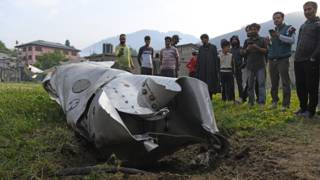
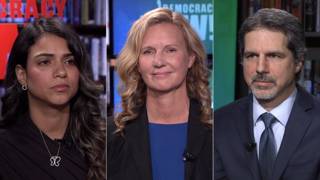
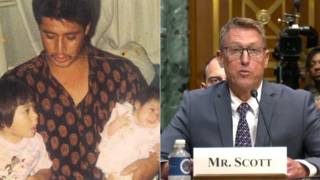

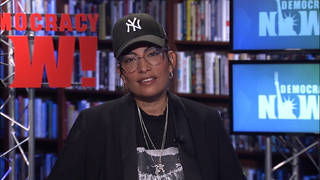

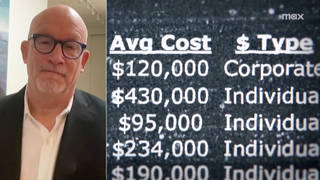
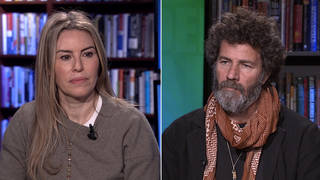

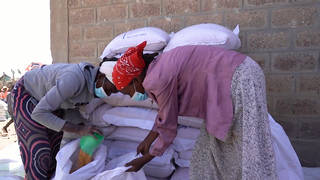

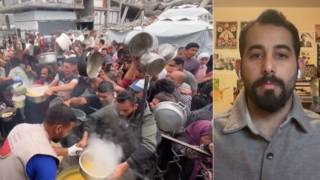
Media Options